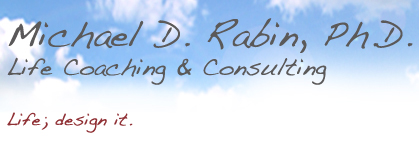
Design Your Life:
How Are You Becoming?
Designers often approach challenging projects using what has come to be known as “design thinking.” At its core, design thinking involves this basic approach: understand the human needs being addressed, brainstorm solutions with few rules (no “rights” and no “wrongs”), create prototypes, try them out, keep what works/ discard what doesn’t, re-design, do it again. The process works best with playful experimentation. At its core is also the acknowledgement that no design is final. Growth comes through evaluation, invention and iterative improvement.
It’s very easy to develop a calcified perspective on one’s life. We become stuck in familiar patterns, routines, beliefs, comforts and expectations. We even develop superstitious beliefs about our lives, beliefs about what we are or are not capable of that we accept without question. For example, some of us possess a sense of perfectionism so strong that it inhibits exploration of challenges with uncertain outcomes. We fear what we have learned to label as “failure.” This fear can be so limiting yet so familiar that it becomes a leash we learn to live with. Such stuck perspectives become ingrained and we may not even recognize that such a perspective is only one perspective from among many. A good designer recognizes opportunity in only partly successful designs and learns from them. It is even possible, if not likely, that a “failure” becomes a success in some unanticipated way if only for the lessons learned.
In a very real sense a “design thinking” approach to creation provides a good model for how one might proactively design one’s life. Trying on a different perspective, like exploring a new design idea, enables us to step outside of our current perspective and see things from a new point of view. This process of examining our lives from different, unfamiliar perspectives can be very enlightening. We might see that each perspective has its own strengths and weaknesses but no perspective is necessarily right or wrong. Simply coming to recognize a stuck perspective as one among many possibilities can be helpful. The process of actively exploring and choosing from multiple perspectives can be empowering. Life coaching helps you examine different perspectives and proactively choose: How are you becoming? (Other Thoughts and Essays)
All content copyright Michael D. Rabin, Ph.D., LLC
